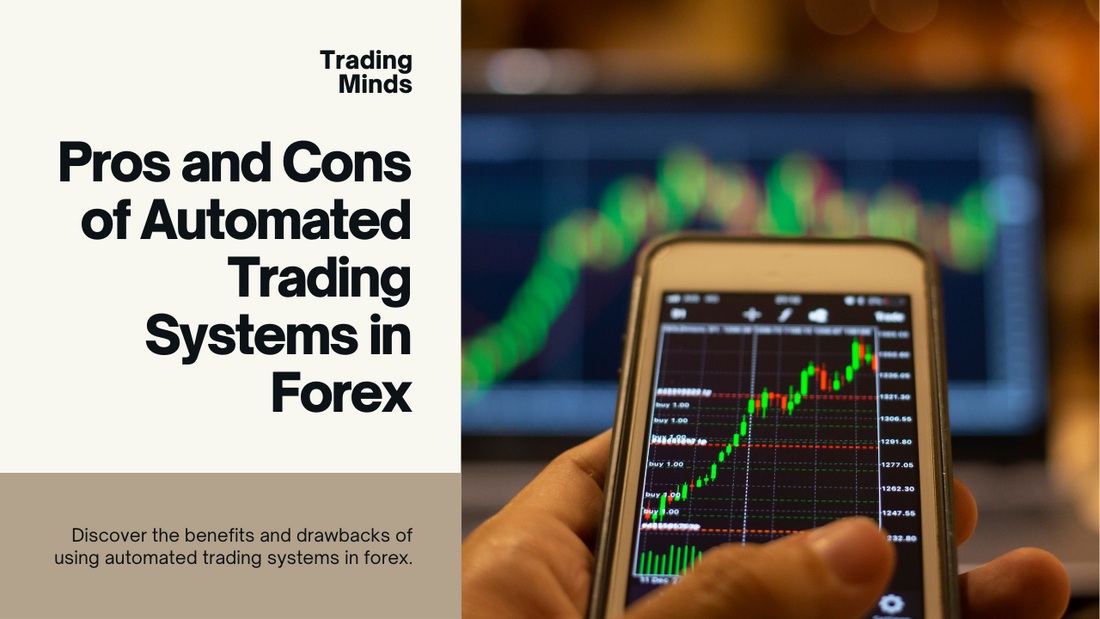
The Pros and Cons of Automated Forex Trading
Share
Forex trading, also known as foreign exchange trading, is the buying and selling of currencies on the foreign exchange market. It is a highly liquid and volatile market that offers potential for significant profits. In recent years, automated forex trading has gained popularity among traders. Automated forex trading involves using computer programs, also known as expert advisors or trading robots, to execute trades on behalf of the trader. While automated forex trading offers several advantages, it also has its drawbacks. In this blog post, we will explore the pros and cons of automated forex trading.
Pros of Automated Forex Trading
1. Increased Efficiency: Automated forex trading eliminates the need for manual trade execution, allowing trades to be executed instantly and efficiently. This can help traders take advantage of market opportunities without delay.
2. Emotion-Free Trading: One of the biggest advantages of automated forex trading is that it removes emotions from the trading process. Emotions such as fear and greed can often cloud judgment and lead to poor trading decisions. Automated trading systems operate based on pre-determined rules and algorithms, ensuring that trades are executed based on logic and not emotions.
3. Backtesting and Optimization: Automated forex trading systems allow traders to backtest their strategies using historical data. This enables traders to evaluate the performance of their strategies and make necessary adjustments to optimize their trading systems.
4. 24/7 Trading: Unlike manual trading, automated forex trading systems can operate 24 hours a day, 7 days a week. This allows traders to take advantage of trading opportunities in different time zones and ensures that no profitable trade is missed.
5. Diversification: Automated forex trading systems can trade multiple currency pairs simultaneously, allowing traders to diversify their trading portfolios. Diversification can help reduce risk and increase the potential for consistent profits.
Cons of Automated Forex Trading
1. Reliance on Technology: Automated forex trading systems rely heavily on technology. Technical glitches, internet connectivity issues, or power outages can disrupt the trading process and lead to potential losses. Traders need to ensure that they have a reliable and stable trading environment.
2. Lack of Flexibility: Automated forex trading systems operate based on pre-determined rules and algorithms. They may not be able to adapt to sudden market changes or unexpected events. Traders need to regularly monitor and update their trading systems to ensure they remain effective.
3. Over-Optimization: While backtesting and optimization are important for improving trading systems, there is a risk of over-optimization. Over-optimization occurs when a trading system is excessively tailored to historical data, resulting in poor performance in real-time trading conditions.
4. System Failure: Automated forex trading systems can experience technical failures or malfunctions. This can lead to erroneous trades or missed trading opportunities. Traders need to have contingency plans in place to mitigate the risks associated with system failures.
5. Lack of Human Judgment: Automated forex trading systems operate based on predefined rules and algorithms. They lack the ability to incorporate human judgment, intuition, and experience into the trading process. This can limit their ability to adapt to unique market conditions or unforeseen events.
In conclusion, automated forex trading offers several advantages such as increased efficiency, emotion-free trading, and 24/7 trading. However, it also has its drawbacks, including reliance on technology, lack of flexibility, and the potential for system failures. Traders need to carefully consider the pros and cons before deciding to use automated forex trading systems. It is important to remember that no trading system is foolproof, and a combination of automated and manual trading strategies may be the most effective approach.



